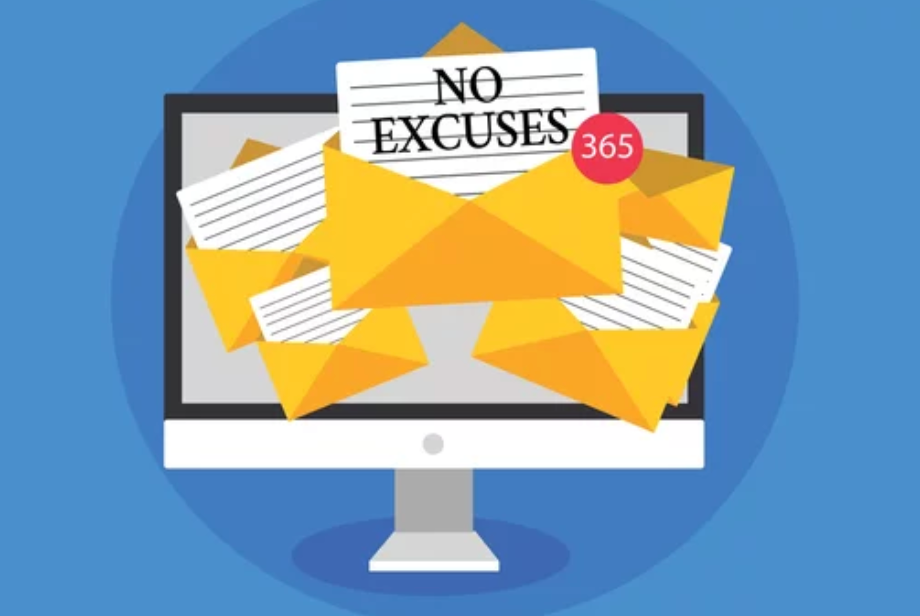Top 10 Ways to Write an Apology Email
Mistakes, such as missed deadlines or project oversights, can significantly impact professional relationships. Apologizing through well-written emails is an effective way to show regret and demonstrate accountability. This article provides a detailed guide on crafting an apology email.

Mistakes are inevitable.
Whether it's a missed deadline, an oversight in a project, or a miscommunication with a team member, how you respond to these errors can significantly impact your professional relationships.
An effective way to make things right and show regret is through a well-written email apology.
Apology emails serve not only as a gesture of accountability but also demonstrate your professionalism and commitment to resolving issues amicably.
In this article, we offer a detailed walkthrough of crafting an apology email that not only acknowledges your mistake but also takes meaningful steps towards making amends.
Acknowledge the Mistake
To begin writing an effective apology email, the first and most important step is to acknowledge the mistake clearly and directly.
This involves:
- Identifying the Reason for Apology: Specify the reason for your apology, ensuring there is no ambiguity about what the apology is for.
- Assessing the Situation's Severity: Recognise and express the extent of the effects your actions—or lack thereof—have had. This understanding shapes the tone and content of your apology.
- Importance of Admitting Faults Directly and Honestly: It is crucial to own up to your mistake without making excuses. This honesty demonstrates personal integrity and responsibility.
- Example Phrases to Acknowledge the Mistake: Consider using phrases such as "I realise that I..." or "I acknowledge my error in...". These phrases directly address the mistake, showing that you are taking personal accountability.
Express Sincerity
In the process of crafting your apology, the sincerity with which you express your remorse plays a pivotal role.
Real regret is shown not only by what you say but also by how you say it.
This sincerity is most effectively communicated through your tone and the careful selection of words that resonate with truthfulness and personal regret.
How to make your tone and choice of words show that you are truly sorry
When you talk or write, it is important to use a tone that shows that it is genuine.
Your capacity to communicate in a way that feels heartfelt rather than forced will have a significant impact on the sincerity of your apology.
Choosing words that reflect a deep understanding of the wrong done and its effects on the other person helps in establishing this sincerity.
Examples of Sincere Apology Statements
Crafting statements that convey sincerity requires a balance of humility, honesty, and a clear acknowledgement that you were wrong.
Phrases like
- “I genuinely regret the pain my actions caused you and take full responsibility.”
- “I understand the trust I broke and am committed to making things right.”
- “I want to apologise for my insensitive comment during the meeting a week ago. I now understand how it could have been hurtful, and I regret saying it.”
- “I’m truly sorry for forgetting our appointment. I know it has bothered you, and I will make sure to be more responsible in the future.”
These phrases are indicative of an apology that comes from a place of true remorse and a desire to mend the relationship.
Take Full Responsibility
Owning up to your mistake completely is a crucial component of a genuine apology. It means avoiding the trap of blame-shifting or coming up with excuses for your behaviour.
This approach signifies maturity and respect for the affected party, showing that you fully understand the impact of your actions.
- Avoiding Blame-Shifting and Excuses: It's important to steer clear of any language that might suggest you're trying to offload the blame on someone or something else.
This includes avoiding phrases like "If only you had..." or "It was just because...". Such statements can undermine your apology and suggest that you're not fully accepting responsibility.
- Language Tips for Owning Up to the Error Completely: When apologising, use first-person statements that focus on your actions and their effects.
Phrases like “I am solely responsible for...” or “I acknowledge my mistake in...” help in demonstrating your acceptance of responsibility. It’s about making it clear that you understand the gravity of your error and its repercussions for others.
- Offering a Genuine Explanation: While it's essential to avoid making excuses, sometimes an explanation can help in providing context to the situation.
You should explain things, but make sure it does not sound like an excuse or a way to shift the blame. It should be a factual account of what happened, without trying to justify or minimise your actions.
Offer a Clear Explanation (if Applicable)
If relevant, briefly explaining what went wrong can be an integral part of your apology, as long as it doesn't serve as an excuse.
This involves striking a balance between being clear and concise and ensuring that the explanation enhances understanding without detracting from the acceptance of responsibility.
- How to Briefly Explain What Went Wrong Without Making Excuses: Focus on presenting a clear and factual account of the events that led to the mistake.
This is not about justifying your actions but rather providing insight into what happened. Use neutral language and avoid detailed narratives that could veer into justifications.
- The Balance Between Clarity and Conciseness: Your explanation should be straightforward enough to foster understanding without overwhelming the listener with unnecessary details. It's about giving enough context to illuminate the situation, not to overshadow your acceptance of fault.
A simple structure can be, "Due to [brief explanation], [impact]. This was not my intention, and I take full responsibility."

Make Amends
After acknowledging the mistake and offering a clear explanation, the next crucial step is making amends.
This means taking concrete steps to rectify the situation or to compensate the affected party. The intention here is not only to express regret but also to demonstrate your commitment to correcting your error.
Here are some suggestions and examples:
- Suggestions for Rectifying the Situation: Depending on the nature of the mistake, rectification can involve redoing a task correctly, making changes to prevent recurrence, or offering time and resources to correct the impact.
It's important to ask the affected party what action on your part would be most meaningful to them.
- Examples of Compensatory Actions or Offers: Compensation can be offered in various forms, including refunds, service upgrades, or goodwill gestures that go beyond the norm.
For instance, if a business mistake leads to a loss for a customer, offering a refund plus a percentage off future services can show remorse and a commitment to maintaining a positive relationship.
Apologise Again
This final apology serves as a sincere acknowledgement of the inconvenience or distress caused, reinforcing your dedication to making amends and ensuring that your message of remorse and accountability is clearly understood.
- Example Closing Apology Statements:
- "I want to reiterate my sincerest apologies for any inconvenience this may have caused. It was never my intention to create such a situation."
- "Once again, I deeply regret the error and the negative impact it may have had. Please accept my heartfelt apologies."
- "In closing, I would like to express once more my apologies for the oversight. I am committed to ensuring it does not happen again."
Commit to Improvement
To ensure that the mistake does not recur, it is crucial to outline specific actions that will be taken towards improvement.
This might include implementing new policies, undergoing additional training, or upgrading existing systems.
By proactively identifying and addressing the root causes of the issue, it demonstrates a strong commitment to betterment and to the quality of service provided.
End on a Positive Note
Concluding your apology email on a hopeful or positive note is an opportunity to shift the focus from what went wrong to how things can improve moving forward.
Expressions such as "I am looking forward to moving past this mistake together," or "We are excited to demonstrate our commitment to your satisfaction in our future interactions," convey a forward-moving intent.
Wrapping up your communication with gratitude not only leaves a lasting positive impression but also reinforces the value you place on the relationship.
Phrases like "Thank you for your understanding and patience as we work through this together" or "We greatly appreciate your willingness to work with us as we improve."
Proofreading and Tone Check
Before hitting the send button on your apology email, it’s vital to engage in a thorough proofreading and tone check.
This process ensures that your message is not only free from grammatical errors and typos but also conveys the intended sentiment effectively.
Takeaways
All in all, crafting an effective apology email involves more than simply expressing remorse. Key points covered include the importance of immediate acknowledgement of the mistake, providing a clear and concise explanation without resorting to excuses, offering a genuine apology with a commitment to resolve the issue, and maintaining a tone that balances sincerity with professionalism.
Moreover, proofreading and a tone check are crucial steps to ensure the message is well-received. When writing an apology email, it is important to be honest and humble. Admitting your mistake and focusing on what you will do to make things right is important.
This approach not only demonstrates accountability but also helps in maintaining and even strengthening professional relationships.

